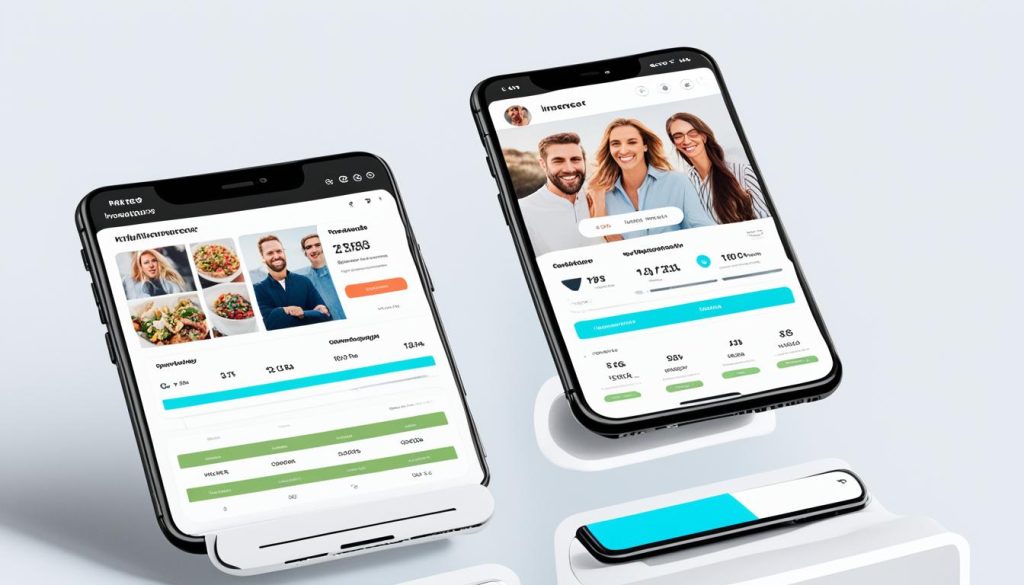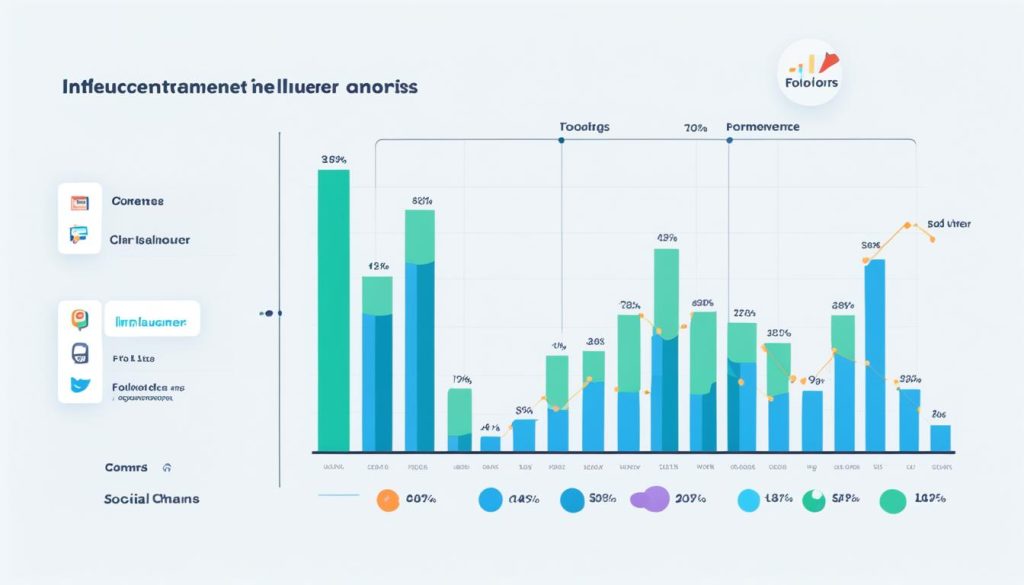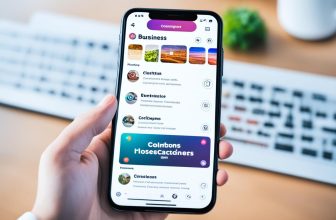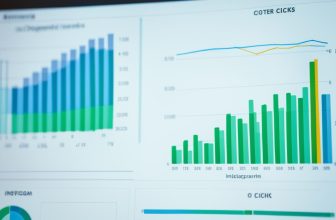Unlocking the power of influencer marketing strategy is akin to finding the perfect puzzle piece that fits snugly into your brand’s picture. In a digital world bustling with hashtags and hyper-connected consumers, brands that tap into the influence of social media influencers are likely to see a swell in their audience’s engagement and loyalty. It’s not just about having someone with a hefty following promote your products; it’s about creating meaningful brand collaboration that resonates with consumers, driving authentic connection and conversation.
The rise of influencer discovery on platforms such as Instagram and TikTok has offered brands a golden opportunity to be memorable, turning every hashtag into a potential conversation starter with their target audience. It’s important, now more than ever, to leverage these digital powerhouses to shape consumer behavior, enhance brand credibility, and carve out a niche in the competitive online space.
Key Takeaways
- Incorporating a sound influencer marketing strategy is imperative for modern branding success.
- Building brand collaborations with the right social media influencers can drive consumer engagement and brand recall.
- The right influencer discovery process goes beyond follower count to consider impact and authenticity.
- Strategic partnerships with influencers add a layer of credibility and relatability to your brand’s digital presence.
- Utilizing influencers who align with your brand’s values enhances message authenticity and audience loyalty.
Understanding the Landscape of Influencer Marketing Strategy
As the digital sphere evolves, businesses must stay abreast of the ways influencer campaigns can pivot the trajectory of a brand’s reach and engagement. Gone are the days where mere popularity sufficed for influencer identification. The emergence of sophisticated analytical tools has steered the focus towards influencers who not only boast large followings but also drive tangible results, such as conversions and strong returns on investment (ROI).
In an age where authenticity is paramount, the distinction between influencers and content creators is becoming more nuanced. Influencer outreach now digs deeper—seeking individuals who do not just create appealing content but can genuinely humanize and advocate for a brand. This strategic shift is crucial in identifying and partnering with not just any influencer, but the right influencer for the brand—those who can find brand ambassadors resonating with their values and vision.
Influencer strategy necessarily entails a thorough exploration of potential ambassadors—those whose ethos and audience align with the brand’s core values. Engagement and interaction are prized over sheer numbers, painting a befitting picture of those whose influence genuinely extends beyond their digital footprint.
“Influencer marketing is not a numbers game, but about finding a voice that echoes the heart of the brand.”
To effectively map out the influencer marketing terrain, consider the following dimensions for a precise influencer campaign:
- Authenticity of Influence – How well does the influencer’s message resonate with their audience?
- Brand-Influencer Alignment – Does the influencer naturally embody the brand’s values?
- Engagement Over Follower Count – Are interactions meaningful and indicative of a committed audience?
Let us explore a detailed comparison of the typical traits characterized by top influencers versus creators.
| Influencer Traits | Creator Traits |
|---|---|
| Intent to drive sales through product endorsements | Focus on creating original content |
| Build personal brands around niches that align with their lifestyles | More diversified content spectrum |
| Engage with their audiences through calls-to-action | Engagement often revolves around content appreciation |
| Collaborate with brands to create sponsored content | Pursue content creation as a form of self-expression |
The convergence of the influencer and the brand in a singular vision marks the hallmark of successful influencer identification and a fruitful influencer campaign. Find brand ambassadors who can bridge this gap and create a sincere and persuasive narrative for your product or service—one that echoes in the hearts and minds of consumers.
How to Identify Your Ideal Influencer Partnership
Identifying the right partnership in influencer marketing is crucial to the success of your influencer campaign. It’s about understanding who your audience is and finding the influencer that can bridge the gap between your brand’s values and the market’s needs. This in-depth exploration goes beyond mere influencer search and dives into the core principles of an effective influencer marketing strategy.
Defining Your Target Audience
Initiating an influencer marketing strategy begins with a clear understanding of your target audience. This foundational step ensures that your influencer outreach will resonate with the consumers most likely to be interested in your brand. Companies looking to maximize their impact must align with social media influencers who share similar audiences.
Analyzing Influencers’ Niches and Aligning Them With Your Brand Values
Pinpointing influencers who operate within niches that reflect your brand’s ethos plays a pivotal part in the process. This alignment of values can substantially enhance an influencer campaign. You must meticulously weigh the type and substance of content shared by potential influencers to ensure that it upholds your brand’s integrity and appeals to the same ethical and aesthetic standards.
Assessing Influencer Metrics Beyond Follower Counts
While a significant following may seem appealing, savvy brands also account for other pivotal metrics to gauge the success of influencer identification. Engagement rates, content quality, and consistent audience interaction are vital KPIs that provide deeper insights into an influencer’s true reach and impact, paving the way for a more data-driven influencer outreach.
| Influencer Type | Average Follower Count | Average Engagement Rate | Relatability & Niche Expertise |
|---|---|---|---|
| Mega | 1M+ | Low to Medium | Global Reach, Low Personalization |
| Macro | 100K – 1M | Medium | Broad Influence, Mixed Niche Expertise |
| Micro | 10K – 100K | High | Highly Niche, Strong Community Bond |
| Nano | 1K – 10K | Very High | Extremely Niche, Authentic Engagement |
For brands like Athleta, the effectiveness comes from influencer partnerships with personalities such as Mariah Bell, who authentically embody the brand’s message and engage a devoted fitness community.
Finalizing the right partnership is not an end; it’s a strategic commencement to elevate your brand to unforeseen heights with influencer marketing.
How to Find Influencers for Your Brand
Finding the right influencers for your brand is a critical step in formulating a successful marketing strategy. The key lies in conducting a strategic influencer search to discover individuals who align with your brand’s ethos, audience, and objectives. Utilizing dedicated influencer marketing platforms, such as Tagger by Sprout Social, can significantly simplify the influencer discovery process, providing insights and analytics to make informed decisions.

The selection process often involves a multi-faceted approach, looking at various factors that would influence the partnership’s success. Here’s a rundown of considerations and steps to guide you through your search:
- Identify your brand’s core values and mission to ensure coherence with chosen influencers.
- Evaluate the content style and quality of potential influencers to predict the potential resonance with your audience.
- Consider the influencer’s engagement level, which is often a more significant indicator of success than follower count alone.
With a plethora of options available, here is a simple table to facilitate the decision-making process when engaging in influencer discovery:
| Influencer Type | Follower Count | Engagement Rate | Content Quality |
|---|---|---|---|
| Mega Influencer | 1M+ | Variable | Highly polished, wide appeal |
| Macro Influencer | 500K – 1M | Higher than Mega | Professional with niche appeal |
| Micro Influencer | 10K – 500K | High engagement | Authentic, relatable content |
| Nano Influencer | 1K – 10K | Highest engagement | Highly niche, community-focused |
In summary, the pursuit of an ideal influencer partnership begins with thorough research and a clear understanding of your campaign goals. When embarking on an influencer search, consider not only the numbers but also the human element—the personal traits and creative output of your potential influencer that will resonate with your target audience.
Gauging An Influencer’s Audience Engagement
For a successful influencer campaign, understanding the depth of interaction between an influencer and their audience is as crucial as identifying the right partner for brand collaboration. Analyzing engagement rates serves as a vital indicator of an influencer’s ability to drive a brand message and motivate followers to take action.
The Role of Engagement Rates in Measuring Success
Engagement rate is a trusted gauge of an influencer’s effectiveness. It reflects the active level of participation and interest in the content an influencer shares. This rate can take various forms, from likes and comments to shares and interaction rates. A high engagement rate typically signals an influencer’s capacity to foster a strong community, fostering a favorable environment for an influencer outreach initiative that resonates and influences consumer behavior.
Understanding Audience Demographics and Relevance
When looking to find brand ambassadors, an essential factor to consider is the transfer of trust and relevance from the influencer to your brand. Therefore, delving deep into audience demographics—such as location, age bracket, and interests—can provide pivotal insights. Ensuring these facets align with your brand’s target market can lead to more authentic and impactful influencer discovery and subsequently successful collaborations.
Evaluating Influencer Content Quality and Consistency
The consistency and quality of the content that influencers generate are telltale signs of their dedication. An influencer who regularly publishes high-quality, original content that resonates with their audience not only elevates the user experience but also boosts the potential for a meaningful brand collaboration. The synergy between an influencer’s creative expression and a brand’s ethos can craft narratives that engage, persuade, and entertain.

| Influencer Type | Average Engagement Rate | Content Quality | Brand Alignment |
|---|---|---|---|
| Nano-influencer | High | Community-Focused | Hyper-Relevant |
| Micro-influencer | Variable | Niche-Specific | Highly Relevant |
| Macro-influencer | Moderate to High | Polished | Broadly Relevant |
| Mega-influencer | Lower | Commercial | Mass Appeal |
Choosing the right influencers for your brand is more nuanced than a simple popularity contest. It requires careful consideration of engagement rates, audience demographics, and content quality. When these elements align seamlessly with your brand’s vision, influencer campaigns transition from mere endorsements to empowering partnerships that carve out space in the popular imagination.
Nurturing Relationships for Long-term Influencer Collaborations
An effective influencer marketing strategy extends far beyond the initial outreach and campaign launch. To reap the long-term benefits of influencer partnerships, brands must focus on building and maintaining strong relationships with their influencers. Engaging in meaningful collaboration plays a significant role in crafting an authentic brand message that resonates with both the influencer’s audience and the brand’s consumer base.
Key to a successful influencer campaign is the notion that mutual growth and benefit are the cornerstones of every partnership. Influencers are more likely to invest their creativity and reach into a brand that shows a genuine interest in their personal brand and audience. Alignment on goals, values, and expectations sets the stage for not just a campaign, but a potential long-standing alliance.
Below is a breakdown of best practices for nurturing these influencer relationships:
- Regular check-ins to foster open communication and provide feedback
- Transparent discussions about campaign performance and future expectations
- Recognition of the influencer’s work and contributions to the brand’s success
- Opportunities for the influencer to give input on campaign direction
- Exploring additional collaboration opportunities that benefit both parties
| Best Practice | Benefits | Example |
|---|---|---|
| Regular Communication | Builds trust and ensures both parties are aligned on the campaign’s progress | Monthly virtual meetings to discuss upcoming content and strategies |
| Performance Analysis | Fosters a results-driven approach, optimizing future campaigns | Quarterly reports and reviews of KPIs and ROI metrics |
| Incentives and Rewards | Encourages continued enthusiasm and effort from the influencer | Performance-based bonuses or exclusive access to products/events |
| Collaborative Planning | Empowers influencers, leading to more genuine and effective promotions | Influencer involvement in product launch planning stages |
| Long-Term Commitment | Develops a deeper brand association and influencer loyalty | Multi-campaign contracts with options for renewal |
Implementing these practices can lead to influencers becoming brand ambassadors who passionately and authentically communicate the brand’s value proposition to their audience. As influencers engage in an ongoing story with the brand, their audiences are provided with a consistent narrative that can lead to increased customer loyalty and brand affinity.
“In a landscape where authenticity is king, nurturing influencer relationships is not just a strategy; it’s the bedrock of brand resonance in the digital world.”
Conclusion
In the swiftly evolving realm of digital marketing, harnessing the power of influential voices has become an indispensable component of a robust brand strategy. The intricate process of influencer search and identification requires precision—a deep dive into the social media landscape to unearth those individuals whose ethos and audience harmoniously echo the spirit of your brand. It is an expedition for alignment, an exploration for ambassadors genuinely invested in your narrative, ready to elevate your presence to resonate within the digital chatter.
Summarizing Key Strategies for Influencer Discovery
The pillars of influencer identification rest upon the bedrock of clear audience definition, astute employment of advanced search tools, and keen analysis of engagement metrics. These are the lighthouses guiding the journey through the sea of social media influencers, enabling brands to filter through the noise and spotlight those whose influence extends beyond mere popularity. It is not the number, but the nod of approval from their audience that signals a true brand match.
Reflecting on the Benefits of Strategic Influencer Partnerships
Recognizing the intricacies of brand collaboration brings forth a vista of potential—increased brand awareness, targeted audience expansion, traffic surge, and elevated sales figures. These partnerships, when strategic and with the right social media influencers, are not just a coalition of two parties but a fusion of shared values, a synchrony that speaks volumes to an audience that values authenticity and relatability above all.
Next Steps After Finding the Right Influencer
With the ideal influencer insight, the path then leads to influencer outreach and campaign planning—a delicate dance of communication and understanding. It’s an initiative to construct not just a bridge but a lasting conduit between brand and influencer, ensuring that every shared message is infused with sincerity and intention, setting the stage for enduring and mutually rewarding partnerships driven by common goals and united visions.
FAQ
What is an influencer marketing strategy?
An influencer marketing strategy is a plan that businesses develop to partner with social media influencers for promoting their products, services, or brand image. It involves identifying the right influencers, crafting the campaign goals, executing the partnership, and measuring the success of these collaborations to boost brand visibility and engagement.
To find the right social media influencers, brands must identify their target audience, select influencers whose audience aligns with their customer base, and evaluate potential influencers based on engagement rates, content quality, and how well the influencer’s values match with the brand’s. Advanced search tools on influencer marketing platforms and social media can aid in this discovery process.
What should be considered during influencer outreach?
During influencer outreach, consider the influencer’s relevance to the brand’s target audience, their content style and quality, their engagement rates with followers, and the nature of their audience. It’s also important to communicate campaign goals clearly, establish terms for collaboration, and ensure that both the influencer and brand benefit mutually from the partnership.
How can you define your target audience for an influencer campaign?
Defining your target audience involves understanding the demographics, interests, behaviors, and preferences of the people you want to reach. This includes analyzing your current customer base and market research to identify who would be most interested in your products or services, which in turn guides the search for an influencer whose followers mirror your target audience.
Why is it important to align influencers’ niches with your brand values?
Aligning influencers’ niches with your brand values ensures that the influencer’s content and audience are relevant to your brand. This increases the likelihood that the influencer’s followers will resonate with your messaging and products, leading to a more authentic connection and potentially higher conversion rates.
How do you assess influencer metrics beyond follower counts?
Assess influencer metrics by looking at engagement rates (likes, comments, shares), audience growth trends, the quality and relevance of content, and how well the influencer’s audience matches the brand’s target demographics. These factors can provide insights into the influencer’s actual influence and ability to engage an audience.
What is an influencer engagement rate and why is it important?
An influencer engagement rate is a metric that measures the level of interaction followers have with an influencer’s content, typically represented as a percentage. It includes likes, comments, shares, and overall follower interaction. A high engagement rate is important because it indicates that the influencer is able to captivate and influence their audience, which can lead to a more successful campaign outcome for the brand.
How do you evaluate an influencer’s audience demographics?
To evaluate an influencer’s audience demographics, review data on audience age, location, gender, interests, and values. This information helps determine if the influencer’s audience aligns with the brand’s target market, ensuring that the marketing content will be relevant and well-received. Many influencer marketing platforms provide these analytics, simplifying the evaluation process.
Why is it essential to examine influencer content quality and consistency?
Examining influencer content quality and consistency is essential because it reflects upon the brand they are endorsing. Influencers who produce high-quality, consistent, and original content are more likely to maintain trust and engagement with their audience, making their endorsement more impactful and credible.
What are the benefits of nurturing long-term influencer collaborations?
Nurturing long-term influencer collaborations can lead to a more authentic representation of the brand, as influencers become genuine advocates. It allows for sustained storytelling and brand exposure, often resulting in a stronger and more loyal following, higher conversion rates, and increased ROI over time.
How do you approach influencers once you’ve identified them as suitable for your brand?
Once suitable influencers are identified, approach them with professionalism and personalization. Use their preferred communication channels, express genuine interest in their work, clearly articulate your campaign goals, and propose a partnership that is mutually beneficial. Building a personal rapport can be key to successful collaborations.







